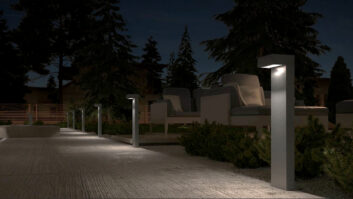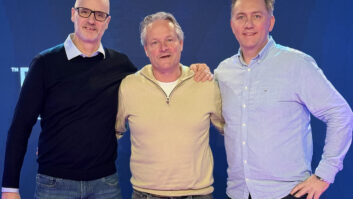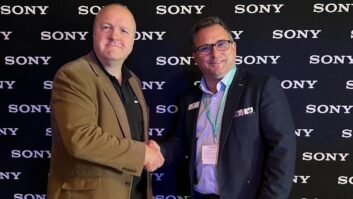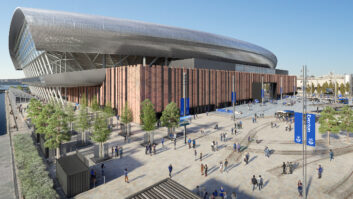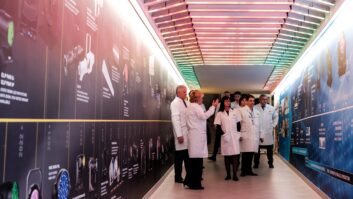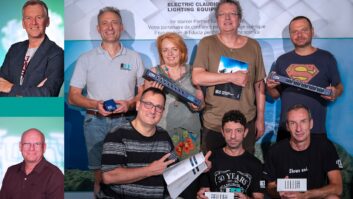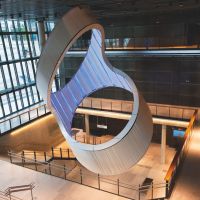
Lighting and power control from ETC has helped the new Stavanger Konserthus (Concert Hall) in Norway, comprising three spaces of up to 1,500 seats each, to be delivered on time and on budget. Comprising three spaces of up to 1,500 seats each, the new Stavanger Konserthus (Concert Hall) in Norway was always going to be an ambitious project – especially given the current economic climate. But thanks to a careful reading of the consultant’s spec by Bico’s project manager Søren Jørgensen, and with lighting and power control from ETC, the project was delivered on time and on budget. The project started at the end of 2009, with installation work only beginning in 2012, and was, says Jørgensen, a long process with many special items included in the specification. Norwegian law says that system specifiers cannot stipulate any individual pieces of equipment or manufacturers, but instead have to state its purpose and what it should be capable of doing. This led, according to Mark Ryan of Theatre Projects Consultants, to a long and detailed tender document. He says: “Working with a local Norwegian consultant, we awarded the contract to Bico based on price and their attention to the detail in the tender document. “The acousticians stipulated that they wanted SineWave dimming in the main Fartein Valen hall, which immediately rules out half the manufacturers in the field, who can only supply regular thyristor dimming. Through Bico, ETC supplied five IES Matrix SineWave racks plus 20 SineWave PowerBars for the lighting trusses. With completely silent power control, the orchestra and managers would be happy. And because of the smooth power curve, the filaments actually last longer, since they’re taken care of better. There are around 420 ways of dimming for the main hall alone, including 120 on the bridges.” The 175-tonne ceiling is attached to 16 hoists, and can be lowered by up to six metres in order to alter the volume of the hall and thus its acoustics. By having some of the dimming system in the ceiling and grid – which was only possible due to the silent SineWave dimming – Theatre Projects was able to save a lot of space in the dimmer room. Ryan says: “There was a lot of engineering in the concert hall, with portable dimming on the truss in concert hall. One of the advantages of ETC’s SineWave dimming is that it is convection cooled, keeping it nice and quiet. We were also able to run just one power and data cable to each power control point, and distribute it locally, rather than running long lengths of cable all the way from the dimmer room, making cable management easier and reducing a lot of costs for the engineering team.” The concert hall was given a complete in-house ETC Unison Paradigm system to control the working lights and house lights. It is, continues Ryan, “an impressive system. Its two processors are controlled from four master control panels with LCDs or any one of 15 switch panels located around the building. Because there are six entrances to the grid as well as machine rooms and a lot of lobbies on the galleries, we made sure we were generous with the control panels – wherever there is an entry into a room, there’ll be a control of some sort.” Adjacent to the concert hall, is a second, multipurpose hall, Zetlitz, with a capacity of up to 1,900 for an all-standing event. “For this flexible black box space,” explains Jørgensen, “we installed a further 10 Sensor3 racks with 800 channels of dimming, along with a similar Unison Paradigm system, with four master panels and 50 button panels.” The foyer also has a Unison Paradigm system, with three Sensor3 Power Control racks and 130 channels either switched or dimmed, to control LED, tungsten and fluorescent. “Some of the lighting uses DALI protocol, while others use DMX,” says Jørgensen. “A few years ago, that would have been a serious challenge, but Paradigm made it really simple. Although we needed interface cards, there was no special programming needed. “We wanted the architectural systems to integrate with the dimmers and control system, and Paradigm does that very well. We knew from the tender return that Bico had understood the terms and offered a very compliant system and paid a lot of attention to our documents, which is what we wanted.” Picture: The Stavanger Konserthus foyer has a Unison Paradigm system to control the lighting. Credit: Jiri Havran/Stavanger konserthus www.etcconnect.com
